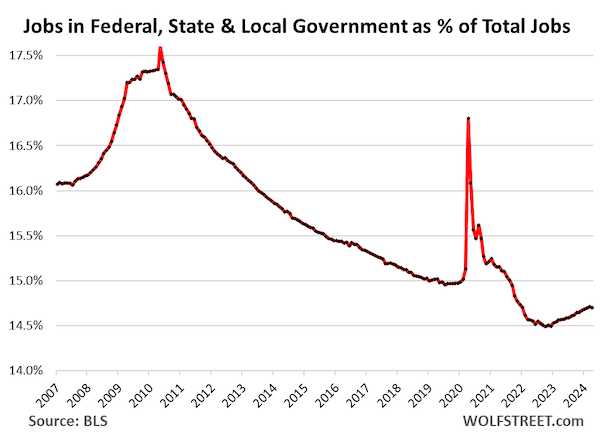Lambert here: Can’t have too many charts!
By Wolf Richter, editor of Wolf Street. Originally published at Wolf Street.
Earlier today, we discussed the overall labor market. But each industry faces its own unique labor market. In some industries, employment has been trucking from all-time high to all-time high, while in other industries, the outlook is darker, usually due to structural changes. So we’ll look at a decade of employment trends in each major industry, based on today’s employment data by the Bureau of Labor Statistics.
The industry categories are by work location. The surveys are sent to employer facilities. The primary activity at that facility determines the industry category. For example, a worker at an Amazon fulfillment center would be under “transportation and warehousing.” It’s not the company that matters, but the work being done at that specific location.
And we use three-month moving averages (3MMA) to iron out the drama of the monthly squiggles.
Construction (all types, from single-family housing to highways).
- Total employment: 8.22 million, new all-time high
- 3MMA growth: +24,000
Manufacturing: After a huge surge out of the pandemic, employment has plateaued for over a year but with a mild upward trend, interrupted by a dip during the auto industry strikes in October. The past five months have all been in a very narrow range around 12.96 million, the highest since before the Great Recession. Manufacturing has continued to automate, requiring fewer but higher-skilled workers, including engineers.
- Total employment: 12.96 million
- 3MMA: -2,000
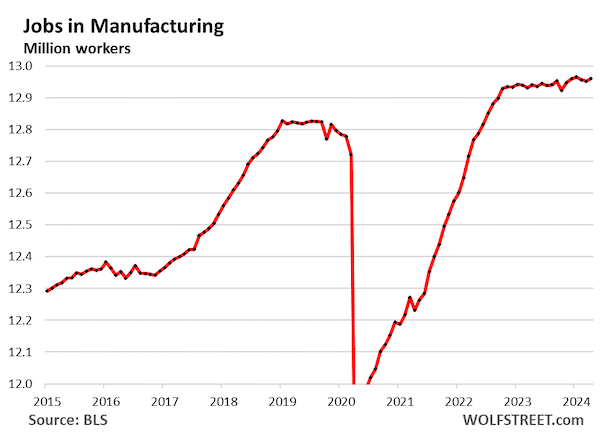
Professional and business services. One of the largest industries by employment, it includes facilities whose employees work primarily in Professional, Scientific, and Technical Services; Management of Companies and Enterprises; Administrative and Support, and Waste Management and Remediation Services. It includes facilities of some tech and social media companies.
The helter-skelter employment growth coming out of the pandemic has definitely slowed, but continues at a subdued pace at nosebleed-high employment levels:
- Total employment: 22.94 million (record)
- 3MMA growth: +4,000
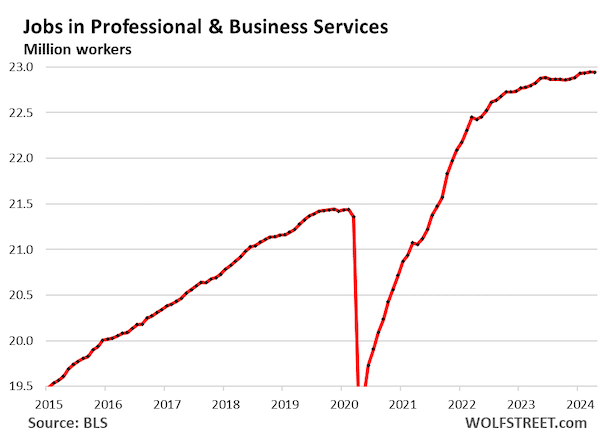
Healthcare and social assistance:
- Total employment: 22.32 million, new high
- 3MMA: +88,000
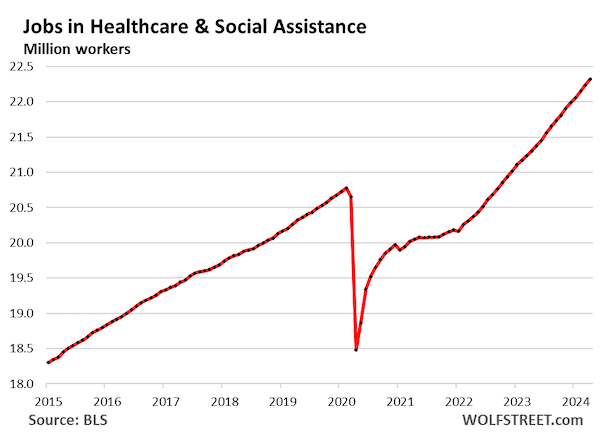
Leisure and hospitality – restaurants, lodging, resorts, etc.
- Total employment: 16.9 million, back at the pre-pandemic high.
- 3MMA growth: +28,000
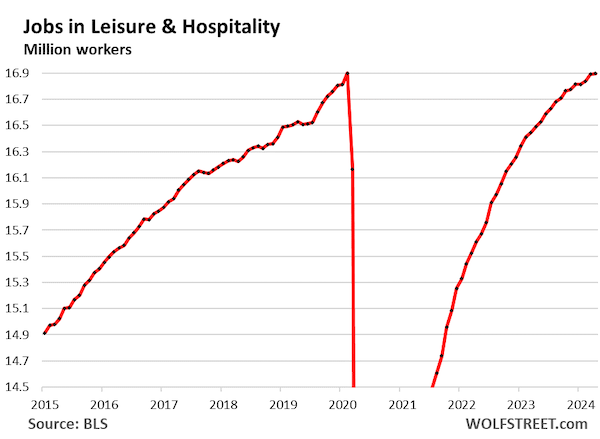
Retail trade counts workers at brick-and-mortar retail stores, such as malls, auto dealers, grocery stores, gas stations, etc., and other retail locations such as markets. It does not include the tech-related jobs of ecommerce operations, drivers, and warehouse employees.
A big portion of this sector has been under heavy pressure from ecommerce operations, and dozens of major retailers have been liquidated in bankruptcy court in recent years, with a total loss of employment, which we have documented in our Brick-and-Mortar Meltdown series. The retailers that are doing well are those that are selling groceries, auto dealers, gas stations, and others that are not under total pressure from ecommerce.
- Total employment: 15.7 million
- 3MMA growth: +20,000
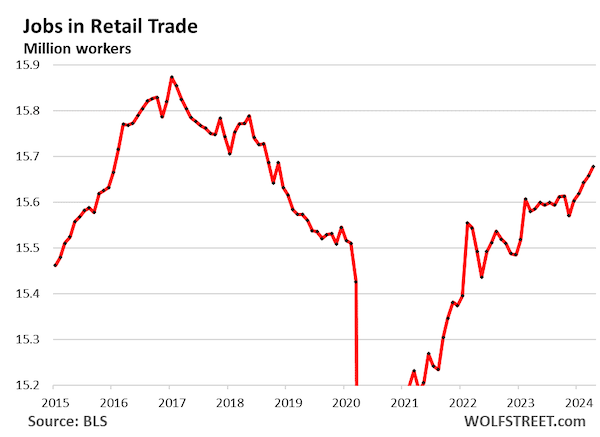
Wholesale Trade:
- Total employment: 6.17 million, new all-time high
- 3MMA: +6,000
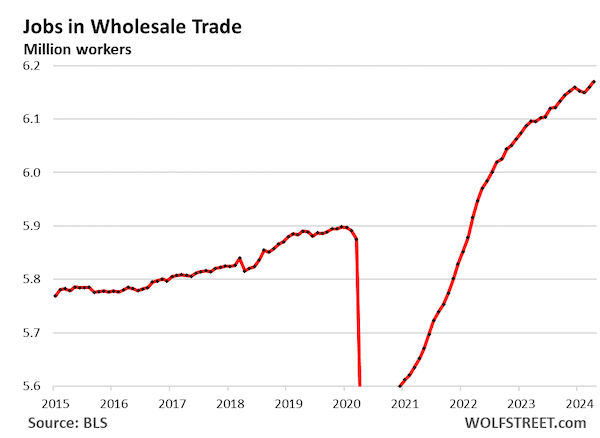
Financial activities (finance and insurance plus real estate renting, leasing, buying, selling, and management). Employment has plateaued at very high levels, as the mortgage industry got decimated after the refinance boom collapsed amid surging mortgage rates in 2021.
- Total employment: 9.23 million
- 3-MMA growth: 1,000
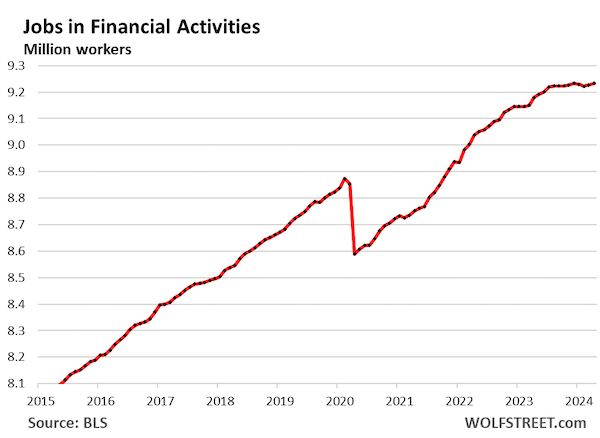
Transportation and Warehousing: Employment surged with the pandemic boom in durable goods, and when that faded as consumers switched back to spending on services, employment began to decline. But in recent months, it began to tick up again:
- Total employment: 6.58 million
- 3MMA growth: +20,000
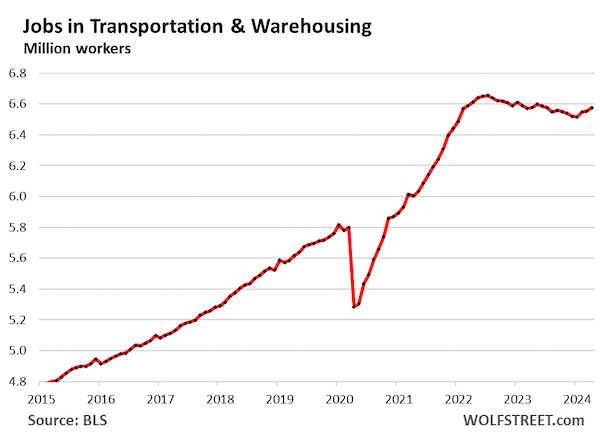
“Information” includes facilities where people primarily work on web search portals, data processing, data transmission, information services, software publishing, motion picture and sound recording, broadcasting including over the Internet, and telecommunications. This includes some work sites by tech and social media companies. You can see the effects of the layoffs.
- Total employment: 3.01 million
- 3MMA growth: -2,000
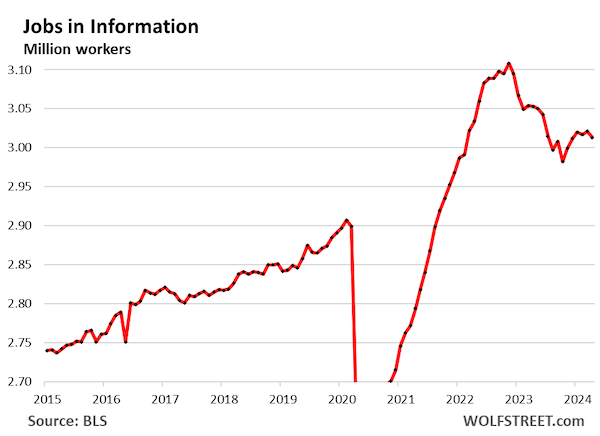
Arts, Entertainment, and Recreation includes spectator sports, performing arts, amusement, gambling, recreation, museums, historical sites, and similar:
- Total employment: 2.64 million
- 3MMA growth: +8,000
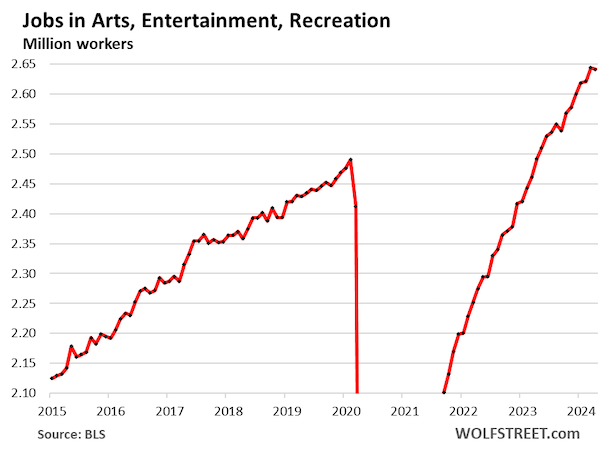
Mining, oil & gas extraction, logging: Major technological advances have impacted employment in this industry, from autonomous mining trucks to the equipment and technologies used in fracking and in logging.
And over these years, the US has become the world’s largest oil producer and largest natural gas producer.
- Total employment: 641,000
- 3MMA growth: unchanged
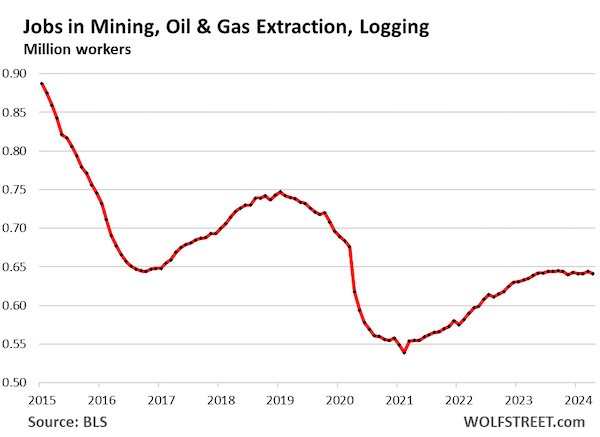
Jobs at federal, state, and local governments. About 12.8% of all civilian government employees work for the federal government. About 87.2% work for state and local governments, many of them in public education, from grade schools to universities.
As the economy and the labor market has grown over the past 15 years, government employment has also grown, but at a slower pace than overall employment, and so the percentage of government workers to overall workers has dropped and reached a multidecade low of 14.5% at the end of 2022. Since then, the percentage has ticked up to 14.7%
So this is total civilian employment at all levels of government:
- Total employment: 23.27 million
- 3MMA growth: +45,000.
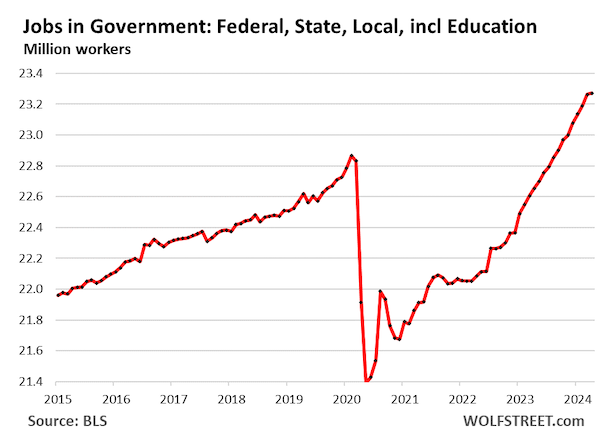
And this is total government employment as a percent of total nonfarm employment. The big spikes are during the Census taken every 10 years, which in 2020 fell on the pandemic, when overall employment had plunged, and so the percentage of government employment to total nonfarm employment spiked more than normal:
